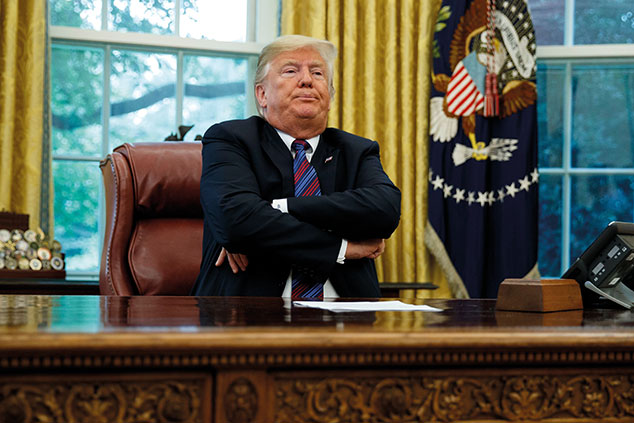
Donald Trump announced on Monday that he is “terminating” the North American Free Trade Agreement (Nafta) and boasted that he had struck “maybe the largest trade deal ever made” with Mexico. He said that the replacement trade deal should be renamed “the United States-Mexico trade agreement” because Nafta had “bad connotations” for America.
This is “precisely the puffery we’ve come to expect” from Trump, says Catherine Rampell in The Washington Post. In reality, Trump can’t unilaterally kill off Nafta. This is only a “possible step” towards a new trade deal. It isn’t signed, and nor does Trump “have authority from Congress to split Nafta into two separate bilateral trade deals”. Additionally, Nafta is mostly implemented by statute and for anything to change Congress will have to pass a new trade law, which a Republican-led Congress “doesn’t seem keen to do”.
The Mexican government wants any new deal signed before its next president takes office on 1 December, but the outgoing president, Enrique Peña Nieto, has also said repeatedly that he expects Canada, the third Nafta member, to be part of any final agreement. Since Trump has to give Congress 90 days’ notice for a new trade deal, that means he has “exactly four days to get Canada on board”.
This means a narrow window to resolve any “outstanding disagreements”, says Gina Chon on Breakingviews. Trump has “inflamed the situation” by threatening to impose tariffs on cars from Canada if it doesn’t “capitulate”, and Canada isn’t in a “compromising mood”, having been excluded from the talks for weeks.
A spokesman for Foreign Minister Chrystia Freeland – who raced back from Europe to rejoin talks – responded that “Canada’s signature is required”.
Looking under the bonnet
Although the deal is “held to have buoyed share prices”, this “ostensibly great and important piece of news on trade” has actually had “minimal market impact”, says John Authers in the Financial Times. “No country has more to lose from a hostile US trade policy than Mexico”, but the initial reaction of Mexican markets wasn’t one of “great relief”. The “bounce” in the broader universe of emerging currencies is “only just” visible. This is partly because of Canada’s exclusion, but another explanation is that this is a “minimally important deal”.
Quite, say David Fickling and Anjani Trivedi on Bloomberg. The headline elements look “dramatic”: 75% rather than 62.5% of a car’s value now has to be manufactured in the US, and 40%-45% of the car has to be made by workers earning at least $16 an hour. But look under the bonnet and just three models of car, none widely sold in the US, will be affected.
It’s a “farce”, says John Rentoul in The Independent – although the lack of real change is reassuring. Trump had wanted a “sunset clause” on the agreement after five years, but has agreed the new deal will last for at least 16. He felt that Nafta’s disputes-resolutions procedures were unfair and “infringed” America’s right to “decide its own laws”, but the deal “keeps those procedures with minor tweaks”. So the “free trade that underpins the Americans, Mexicans, Canadians – and Europeans – stumbles on, despite the attempts of populist politicians to wreck it”.
Much of the deal amounts to “window dressing”, agrees the Financial Times. Nevertheless, “Canada – and Capitol Hill – will do the world trading system a great favour if they decline to be bounced into” supporting it. Indeed, this would be an “excellent time” for Congress to reassert its authority over trade deals and demand that some “sanity and transparency be restored to the process”.